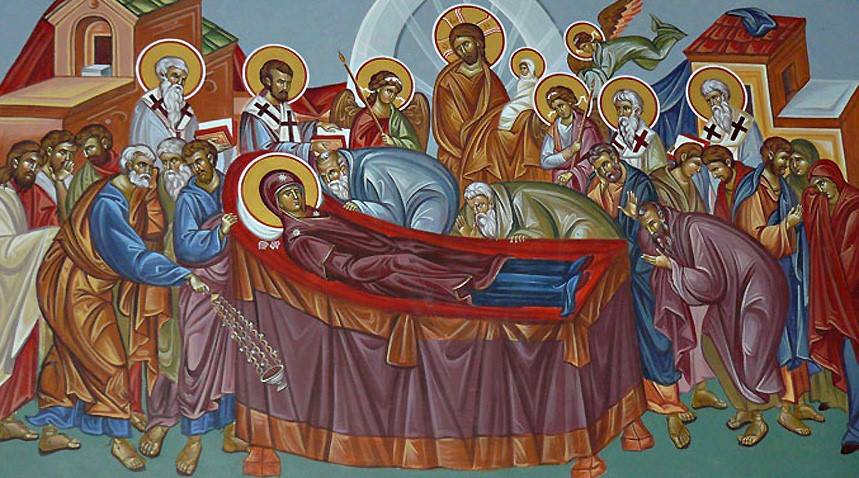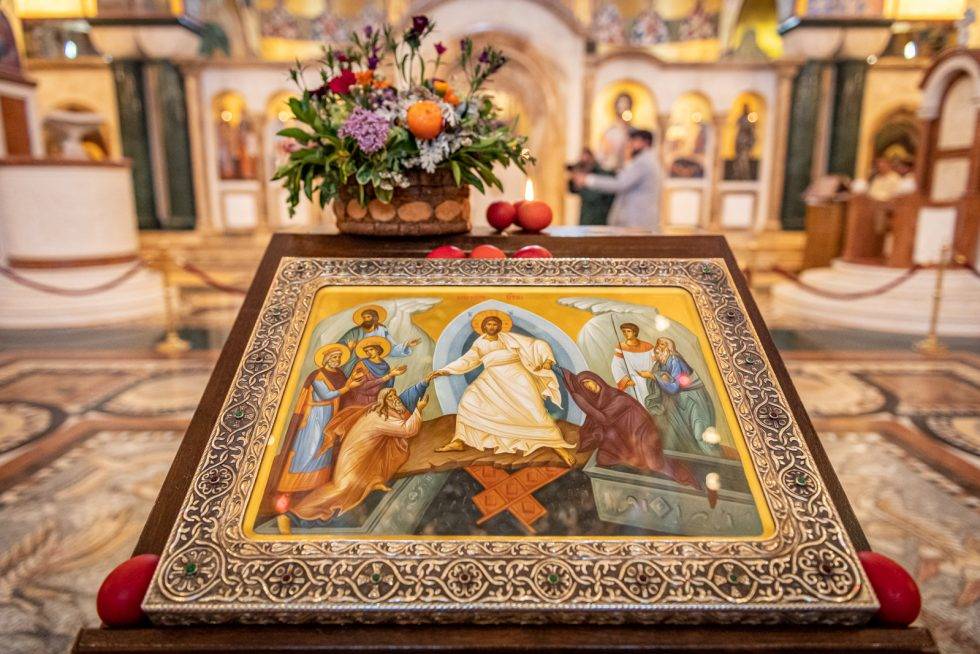
Fasting in honor of the Most Holy Mother of God: Assumption fast
In the Church of Christ, the person of the Most Holy Theotokos has always been especially respected, and one of the forms of this respect for the Mother of God is the Dormition fast, which was instituted in Her honor.
The image of the Holy Virgin was especially revealed to the people of God in the Old Testament through archetypes: in Jacob's Ladder, the unburnt blackberry, in the miraculous passage of the Jews through the Red Sea, in the jar of manna, in Gideon's fleece, and at the end the prophet Isaiah prophesied: "Behold, the girl will will conceive, and will give birth to a son, and will call his name Emmanuel" (Is. 7, 14). Because of her priceless role - the birth of our Lord Jesus Christ, our Savior, the Most Holy Mother of God has always been especially revered, and the Church wisely, as an expression of respect, gave her the Assumption fast that precedes the feast of Her Assumption. Assumption fast is the youngest among multi-day fasts, and it was established after the example of the Most Holy Mother of God, who spent the time before her death in fasting and prayer. In terms of its severity, this holy fast is milder than the Holy Forties, and stricter than the Christmas and Apostolic fasts.
The Assumption fast is much younger than the feast of the Assumption of the Blessed Virgin Mary itself, and we find the first mention of this fast in Saint Theodore the Studite, who says: "The fast of the Mother of God should be observed in the same way, and only the day of the Transfiguration of the Lord is resolved on oil and fish". According to some, this fast was created so that the Eastern Church would have four fasts that would correspond to the four seasons, as is the case in the Western Church. During the formation of this post, the most doubts were related to the feast of the Transfiguration of the Lord, which has a long post-holiday, and therefore somehow disturbs the flow and rhythm of the post. Another important testimony about the Dormition fast is found in the tomos of the union from the year 920, which says that those who are married can receive communion only three times a year, namely on the feasts of: Resurrection of the Lord, Nativity of the Lord and the Dormition of the Blessed Virgin Mary. The antiquity of the Holy Assumption fast is discussed by the Bishop of Caesarea Athanasius of Palestine and Nikon Montenegrin, who cite the letter of Metropolitan John of Nicaea addressed to the Armenian Catholicos Zacharias, in which, among others, the Assumption fast is mentioned. Nikon the Montenegrin also testifies about the Assumption fast when he says that those who observe the Assumption fast base the tradition of this fast on the Apostolic tradition. To the question of the Saints sent to Patriarch Nikola regarding the Dormition fast, the Holy Patriarch answered by emphasizing that the Dormition fast existed before, but because of the pagan fasts that happened then, it was moved.
Patriarch Nikola also testifies that fasting in honor of the Mother of God was fasted for the purpose of healing, especially those who were sick. In the work "On the Three Forties" attributed to the Antiochian Patriarch Anastasius, he testifies that according to the apostolic institutions there was a fast from Pentecost to the Assumption, and that there were therefore three multi-day fasts, but that due to its length, that fast was divided into the Apostolic and Assumption fasts , and thus we got four multi-day fasts. The Dormition fast was finally established during the time of the Constantinople Patriarch Luke Chrysovergo (1156-1169) at the Constantinople Synod (1166). Despite all these testimonies about the Dormition fast, there is no mention of it in the typica until the 12th century. We find the first mention in the typic of the monastery of St. Nicholas of Casula in Southern Italy, from 1174. In this typic, it is written that the fast in honor of the Virgin does not begin on the 1st/14th. August, due to the feast of the Holy Martyrs Maccabees, already begins on the 2nd/15th. August. It is interesting that not a single later typic speaks of the Assumption fast, but mentions only three multi-day fasts. When it comes to worship, among the multi-day fasts, only during Holy Forties (Easter Lent), we have significant liturgical peculiarities. When it comes to the Dormition fast, it is interesting to mention the practice of the Church of Jelada, in which during the Dormition fast, after the evening service, a prayer canon is served to the Blessed Virgin Mary, which aims to pray more fervently to the Blessed Mother of God during the fast established in her honor.
Any mention of fasting also implies an emphasis on the unbreakable connection with the Holy Eucharist, because every Fast is an integral part of liturgical life. Every feat of Christians in fasting and prayer gets its fullness in active participation in the Holy Liturgy, since fasting in itself was never an individual act, but was always supported by the liturgical experience of the Church, receiving its crown in the Eucharistic gathering.
Branislav Ilić, theologian
Source: SPC
PHOTOS
RELATED ARTICLES

Calendar for April 23 The Holy Martyrs Terentius, Africanus, Maximus, Pompey and Others
They suffered for Christ and were crowned with a crown of glory during the...

EASTER CONCERT OF THE CHILDREN'S, YOUTH AND SENIOR CHOIR OF THE SPD JEDINSTVO HELD
In the Church of St. Nicholas in Kotor, the Easter concert and another, to say...

Easter Tuesday
Maundy Tuesday, Easter Tuesday (Greek: Τρίτη...





.png)